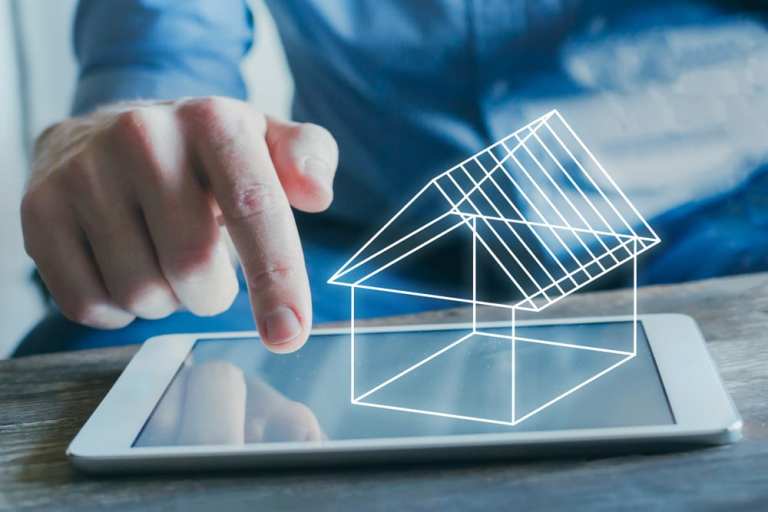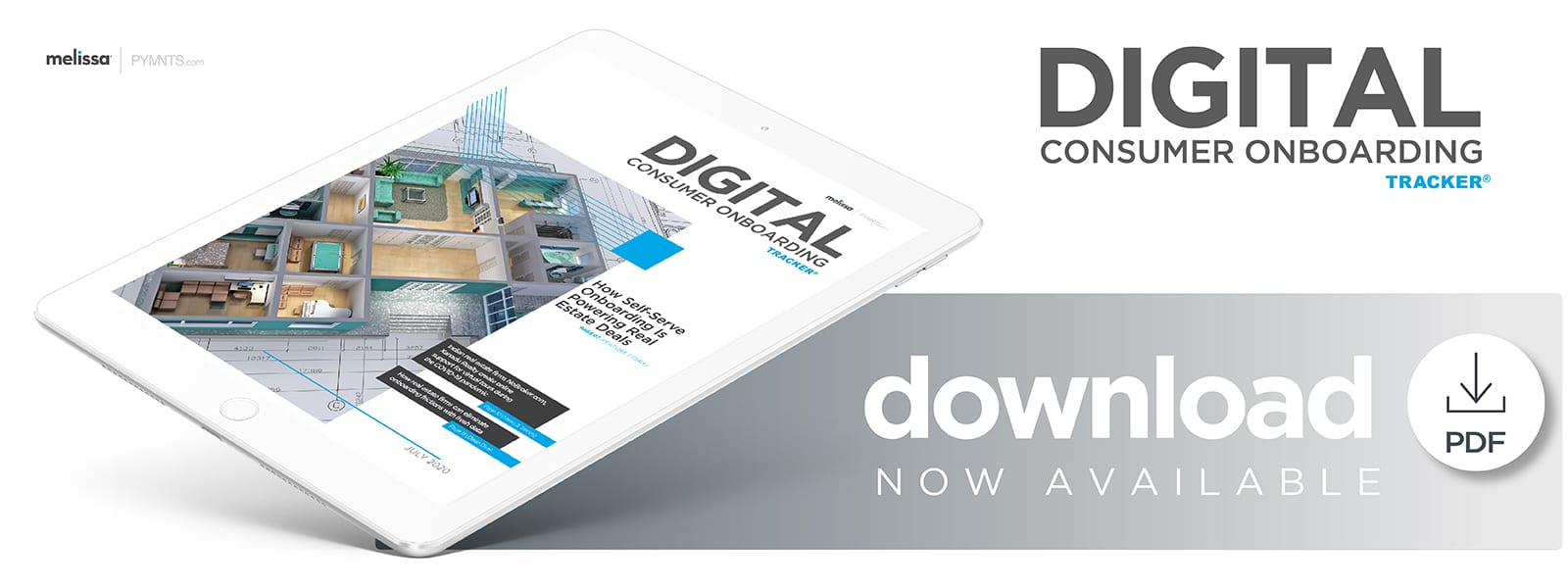How Self-Serve Onboarding Is Powering Real Estate Deals

The pandemic has fundamentally changed all aspects of real estate, and time-consuming procedures like onboarding and ID verification for prospective buyers and sellers that were done manually must now be handled digitally, says Colin Wiel, chief technology officer at property-management firm Mynd. In the latest Digital Consumer Onboarding Tracker, Wiel discusses how embracing self-serve digital onboarding is crucial for real estate firms looking to make the digital leap.
The pandemic has sent the U.S. real estate industry reeling, with rising unemployment rates and a nationwide recession sending prices and home sales lower in certain markets.
There have been some positives in this space, though. Contract activity for new properties rose by 44.3 percent in May, for example, indicating that interest within the real estate industry is on a tentative upward swing.
Prices will likely fluctuate for a while, but the pandemic may have significant long-term impacts on the industry, even after the market finds its footing. Months of stay-at-home orders have showcased how crucial digital tools have been to helping potential homeowners and renters find and finalize new property purchases.
Today’s property owners want to interact with real estate professionals as they would with any other businesses or services, and this means they value using online tools for everything from onboarding to managing rent or maintenance, Colin Wiel, co-founder and chief technology officer of property management firm Mynd, explained in an interview with PYMNTS.
“The COVID-19 pandemic is pushing people into a more digital mindset and way of interacting [with firms],” Wiel said. “People are becoming more comfortable with more virtual processes [that enable that], which is only to our advantage because that is how we have largely designed our business.”
Renters’, residents’ and property owners’ adoption of digital tools is likely to expand after the pandemic passes, meaning the real estate industry must keep up with this trend. Property management firms thus need to provide digital ways for owners to onboard with real estate services as well as manage their properties, Wiel explained, especially as the space consolidates and scales itself amid the emergence of innovative online tools.
Confronting Digital Onboarding’s Slow Growth
Pandemic-driven restrictions on physical interactions have highlighted the growing importance of online and mobile channels in the real estate industry. Many landlords have used such channels to coordinate tenants’ rent payments or repairs, for example, and safety-conscious owners have sought to partner with property management services that offer remote onboarding.
Wiel said Mynd’s internal communications have enabled remote interactions since the company opened in 2016, meaning the industry’s recent changes have not prompted dramatic alterations in its operations. It is now expanding this type of communication into its interactions with owners.
“The COVID-19 pandemic has not really interfered with our onboarding of properties,” he said. “We have been working with owners, offering to do Zoom conferences with them and interacting with them virtually, and that has gone very well. We also still have conversations over the phone and do things by email.”
Mynd presently manages about 8,000 units for several thousand property owners in the U.S., and it onboards new clients through phone calls or other digital interactions via its website. It has been working to add more digital onboarding capabilities since before the pandemic to boost speed and provide tech-savvy capabilities, including an upcoming solution that allows owners to complete the onboarding process themselves.
“Currently, we have a human on our side who is directly working with the owner and collecting that data,” Wiel said. “We are close to rolling out a self-serve onboarding tool [through which owners] can upload a copy of their lease, … answer all the questions online and — if there are no problems that need to be discussed — they could get through the entire workflow without interacting with a human on our side.”
The new digital onboarding tool is set to roll out in the third quarter of 2020, Wiel said. Mynd’s present process allows owners to send many of the documents required for onboarding — such as property leases and any identifying forms — via email or through links provided by the firm, but the new service intends to consolidate this into one step for ease of use. This includes helping them with tracking rent due dates and receiving payments, Wiel said. Residents can use a sister mobile application Mynd developed to pay their monthly rents using automated clearing house (ACH), credit cards or cash payments.
Such solutions are becoming only more essential as the real estate and property management spaces become more digitally minded in their customer interaction strategies, Wiel said. This includes maintaining digital access throughout the client relationship as both industries consolidate and scale.
Technology’s Role in Property Management’s Future
Property management is currently very “mom-and-pop,” Wiel explained, noting that there are approximately 30,000 such firms in the U.S. Market share for most of these companies remains slim, but digital tools’ adoption is providing opportunities to change this.
Digital technologies’ continuing innovation and availability could have profound effects on the future of property management, Wiel argued, similar to how such solutions allowed the coffee and taxi spaces to grow and produced industry titans such as Starbucks and Uber. He noted that such a shift could take place in real estate and property management within the next few years, especially as property owners seek seamless digital support to maintain their properties.
“I think what is inevitable is the state of technology today, is … between cloud computing, mobile computing and AI, it makes sense for property management to be done at scale,” he said. “There are huge advantages to doing property management at large scale in terms of having much more data, being able to invest [in] and analyze that data and developing software to automate certain processes.”
Firms can use such data to help owners better view the current state of their properties and optimize rent payments and other services through online channels. This means that property management firms will need to reexamine every facet of their relationships with property owners — from onboarding onward — to capitalize on the digital trends shaping the industry’s future.
